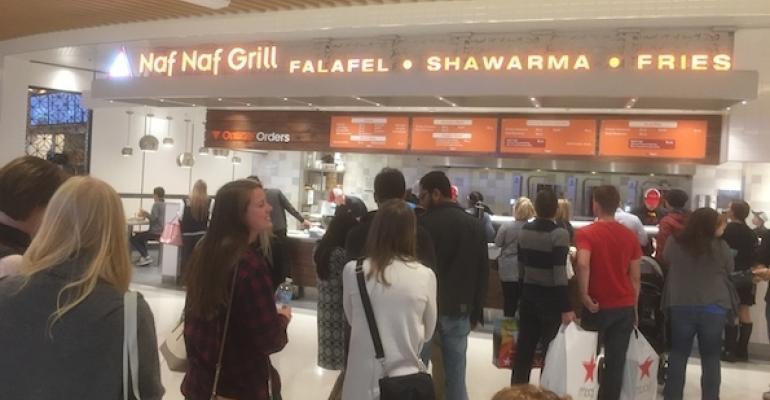 This post is part of the On the Margin blog.
This post is part of the On the Margin blog.
We spent Friday at the Mall of America in Minneapolis, where long lines of shoppers formed outside of retailers like Lululemon and Old Navy.
These lines were outside the restaurants, too. At a Shake Shack location, for instance, customers started showing up at 8:45 a.m. and kept the line active all day long.
Customers crowded concepts like Piada, Naf Naf Grill, Freshii, Chipotle Mexican Grill and Noodles & Co while diners waited for tables at Rainforest Café and Buffalo Wild Wings.
But that was nothing, apparently, compared to the number of people who instead opted to shop at home in their pajamas, eating leftovers.
Retail foot traffic over the busy holiday weekend was down from last year, according to the National Retail Federation. Consumers are spending more time shopping on their computers, and less time shopping at the mall.
This year, 99 million people shopped inside of stores. By comparison, 103 million shopped online. Last year, according to the NRF, 102 million people shopped in stores and 103 million shopped online.
 Black Friday weekend, and the entire Christmas shopping season, brings traffic to many restaurants, especially those that populate malls and other shopping centers — even if the season isn’t quite as vital as it is for other retailers.
Black Friday weekend, and the entire Christmas shopping season, brings traffic to many restaurants, especially those that populate malls and other shopping centers — even if the season isn’t quite as vital as it is for other retailers.
Yet the industry, and the retail sector in general, has been adapting to a new reality of lower foot traffic and higher online traffic for years now. Fewer consumers are shopping outside their homes, causing problems for many retail companies that depend on that traffic.
Online shopping is up 12 percent so far this holiday season, according to the Reston, Vir.-based information firm comScore. Online shopping increased 17 percent on Thanksgiving Day and 19 percent on Black Friday.
Reduced retail foot traffic could be one long-term contributor to static traffic at the nation’s restaurants — traffic, rather than average check, has been the biggest problem facing restaurants this year.
That said, retail shopping centers have increasingly used restaurants as anchors to generate traffic, rather than retail shops and department stores, given that the sector is largely immune to competition from the Internet. And, restaurants generate traffic all year long.
Another problem over the weekend was that consumers spent less. Average spending per person over the Thanksgiving weekend was $289.19, according to the NRF, down from $299.60 last year. In short: Fewer people shopped outside the home and when they did they spent less.
Consumers are simply spending less. Despite low unemployment and a growing economy, consumers are cutting back on their spending, which is reflected in the retail numbers — and is another potential explanation for the drop in restaurant traffic this year.
Jonathan Maze, Nation’s Restaurant News senior financial editor, does not directly own stock or interest in a restaurant company.
Contact Jonathan Maze at [email protected]
Follow him on Twitter: @jonathanmaze





